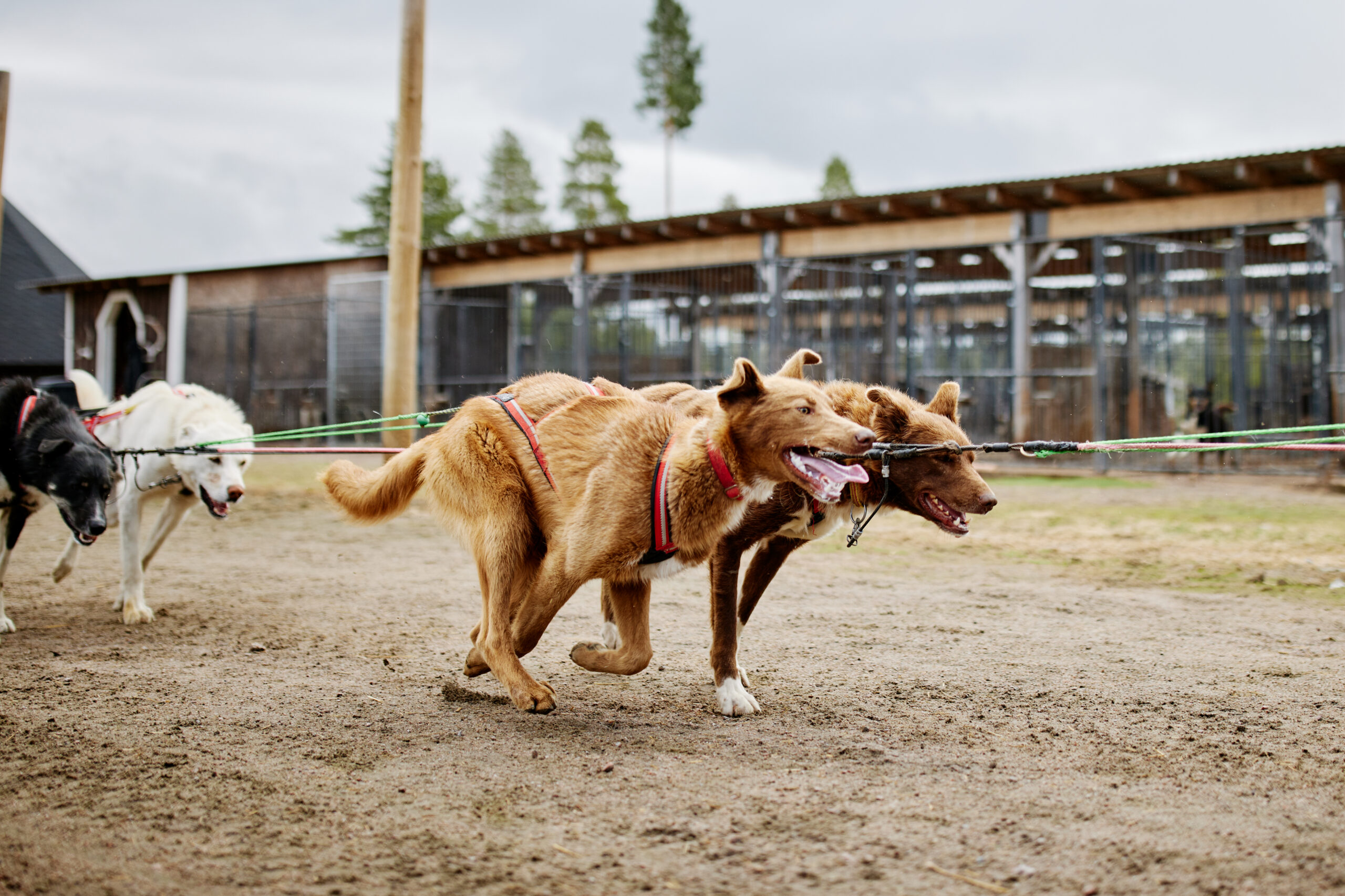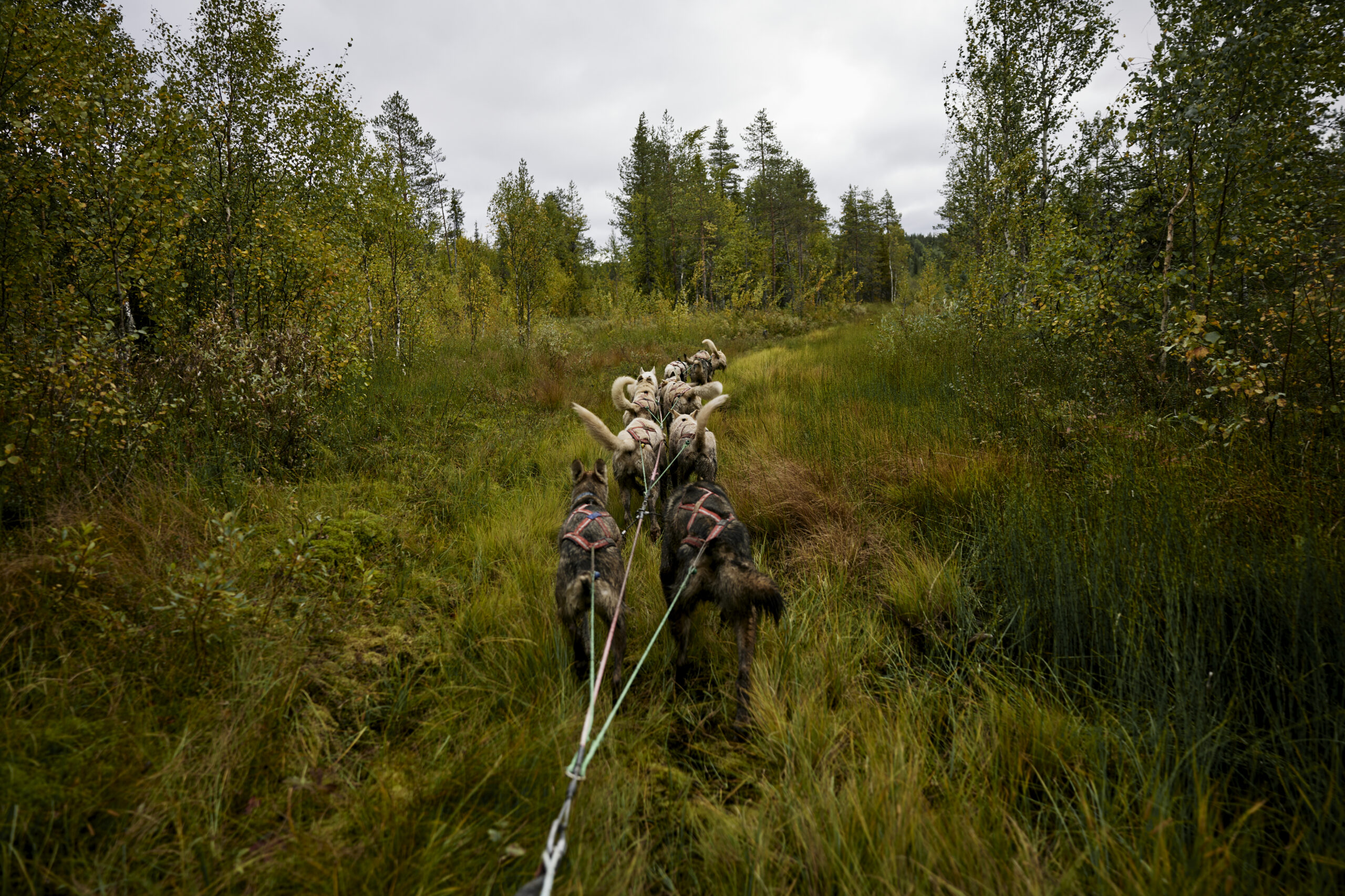Polarised Sled Dog Training: Building Strength and Endurance at Bearhill
As July turns to August in Lapland, something changes in the air—and not just for the humans. The first cool nights after a long summer set off a ripple of excitement through the kennel. You can hear it in the dogs’ voices, see it in their restless pacing. Just like migratory birds sensing it’s time to head south, sled dogs know: running season is coming.
At Bearhill, August marks the switch from our summer routine to autumn training mode. Gear gets checked, schedules shift, and the first serious workouts begin. Over the years, I’ve developed our early-season plan by borrowing ideas from my days dabbling in triathlon—especially the concept of polarised training.
In human endurance sports, polarised training means spending the majority of your training time at low intensity, and the rest at very high intensity, with little in between. For sled dogs, the same logic works beautifully in early autumn when temperatures still limit continuous long-distance running.
Our version of polarised training has two main components:
1. Long, Low-Intensity Dog Walker Sessions
All summer, the dog walker turns an otherwise physiologically unproductive season into a foundation-building period. These sessions—lasting 1 to 2.5 hours—are about steady, low-intensity aerobic work. They’re also a way to gradually heat-adapt the dogs so that, by August, they can handle more demanding workouts without overheating.
2. Short, High-Intensity Power Pyramid Intervals
When it’s still too warm for continuous long runs, we focus on quality over quantity. That’s where power pyramids come in—the first “real pulling” workouts of the season.
Here’s how it works: we hook up just enough dogs to pull a heavy quad bike in low gear—enough resistance to challenge them, but not so much they can’t move it. After a gentle warm-up, we start the pyramid:
- 1 min pull → 4 min rest
- 2 min pull → 3 min rest
- 3 min pull → 2 min rest
- 4 min pull → 1 min rest (pyramid peak)
- 3 min pull → 2 min rest
- 2 min pull → 3 min rest
- 1 min pull → 4 min rest
The work is short, maximal, and separated by generous rest periods to allow for cooling and recovery. This kind of session builds explosive pulling power—like sprint intervals for a human cyclist or runner.
By combining long, slow endurance work with short, intense intervals, we lay a solid foundation for the season without risking heat stress or burnout. The dog walker builds the aerobic base; the power pyramids build strength and anaerobic capacity. Both will pay off once cooler weather arrives and we can start ramping up distance.
If you would like to learn more about our procedures, policies, and training methods, check out the blog articles below.
- Why the Dog Walker is One of the Best Tools in Our Kennel
- Why We Walk the Puppies: Building the Foundation for a Sled Dog’s Life
- Appetite First: Building Eager Eaters in Our Puppies
- The Painted Puppies: Why We Mark Our Pups with Nail Polish
- Why We’re a No-Kill Kennel: Bearhill’s Approach to Euthanasia and End-of-Life Care
- Preparing for Winter: Training Dogs, Training People, and Building a Stronger Team
- Sled Dog Endurance Training: Gradual Progress and Recovery for Peak Winter Fitness






